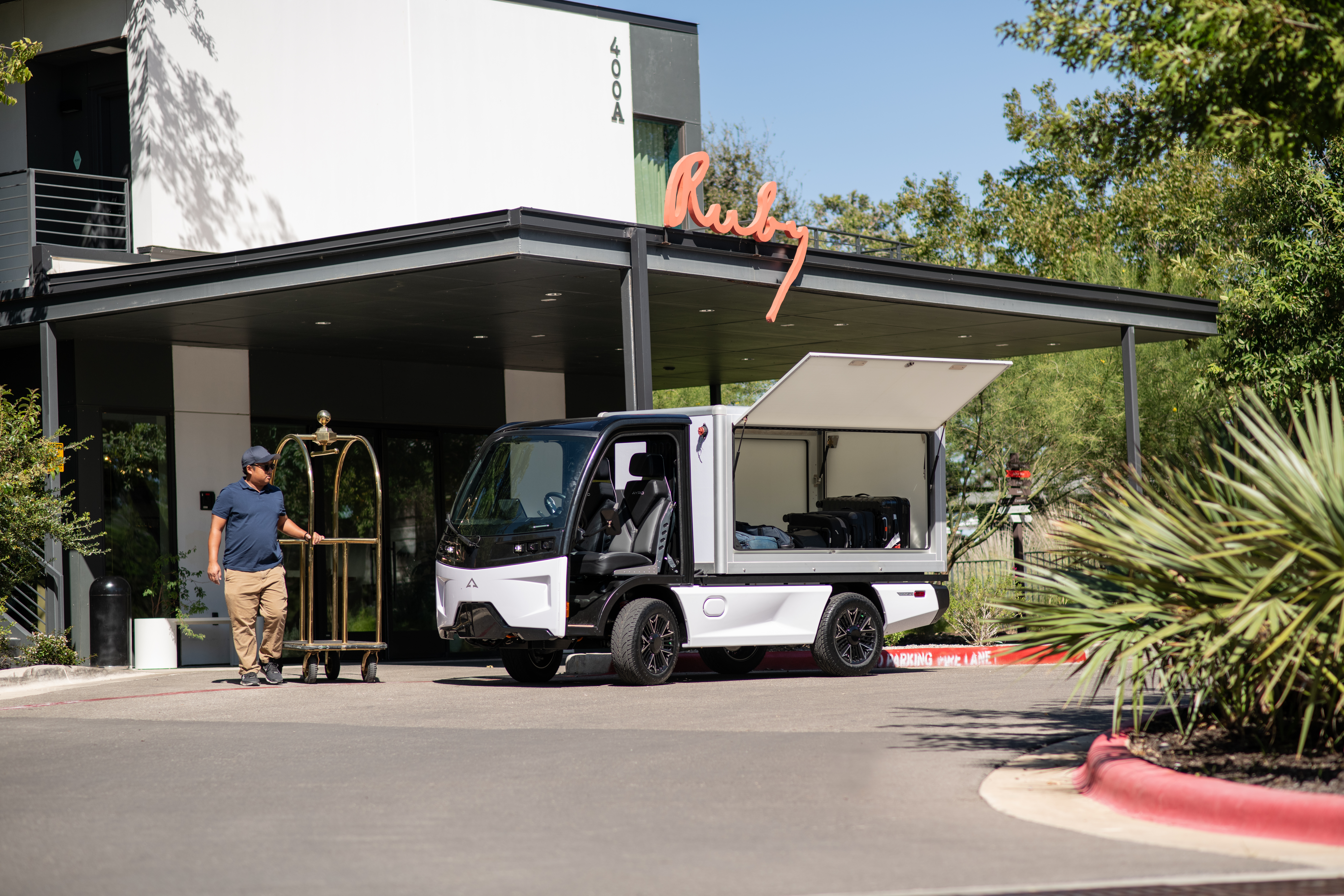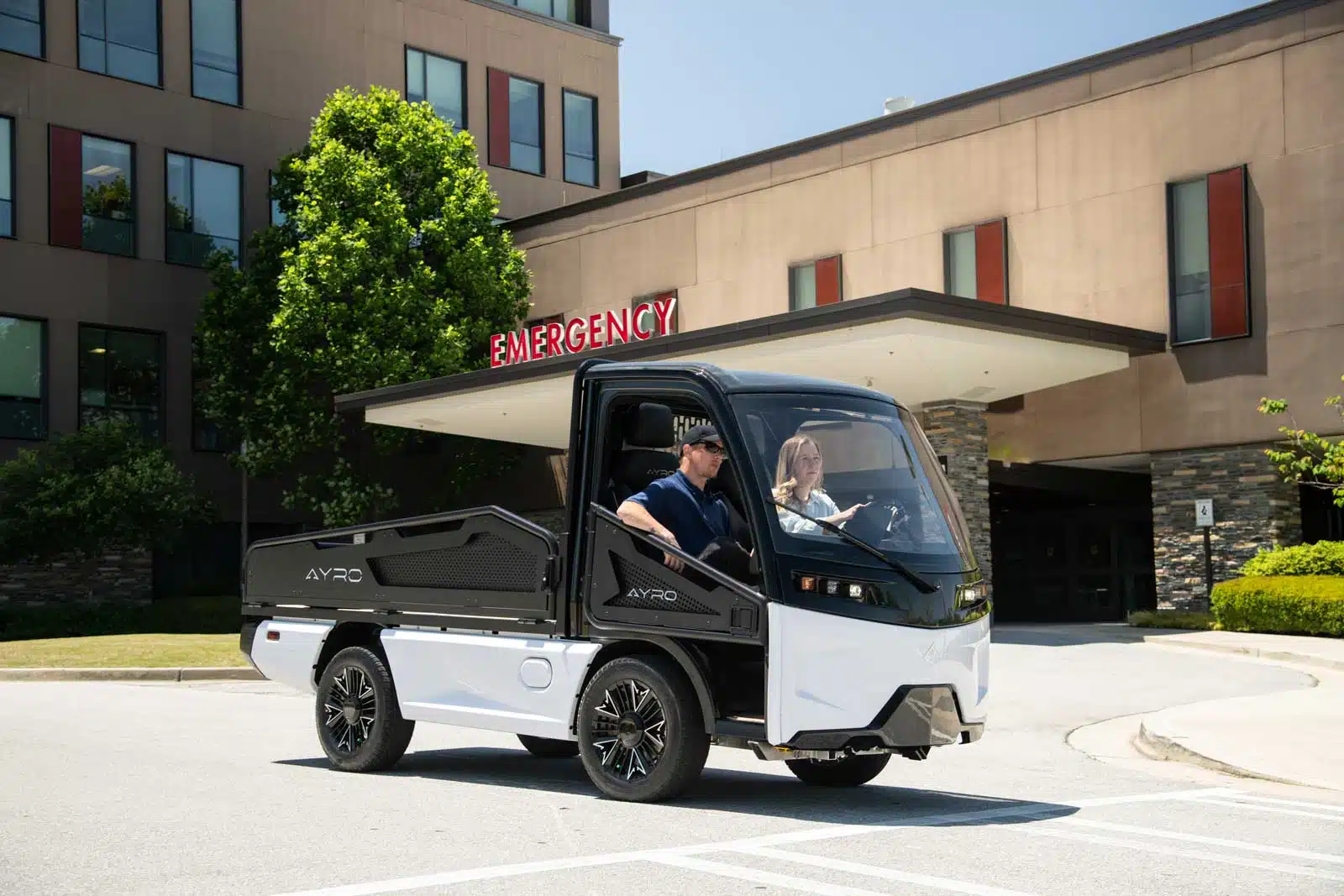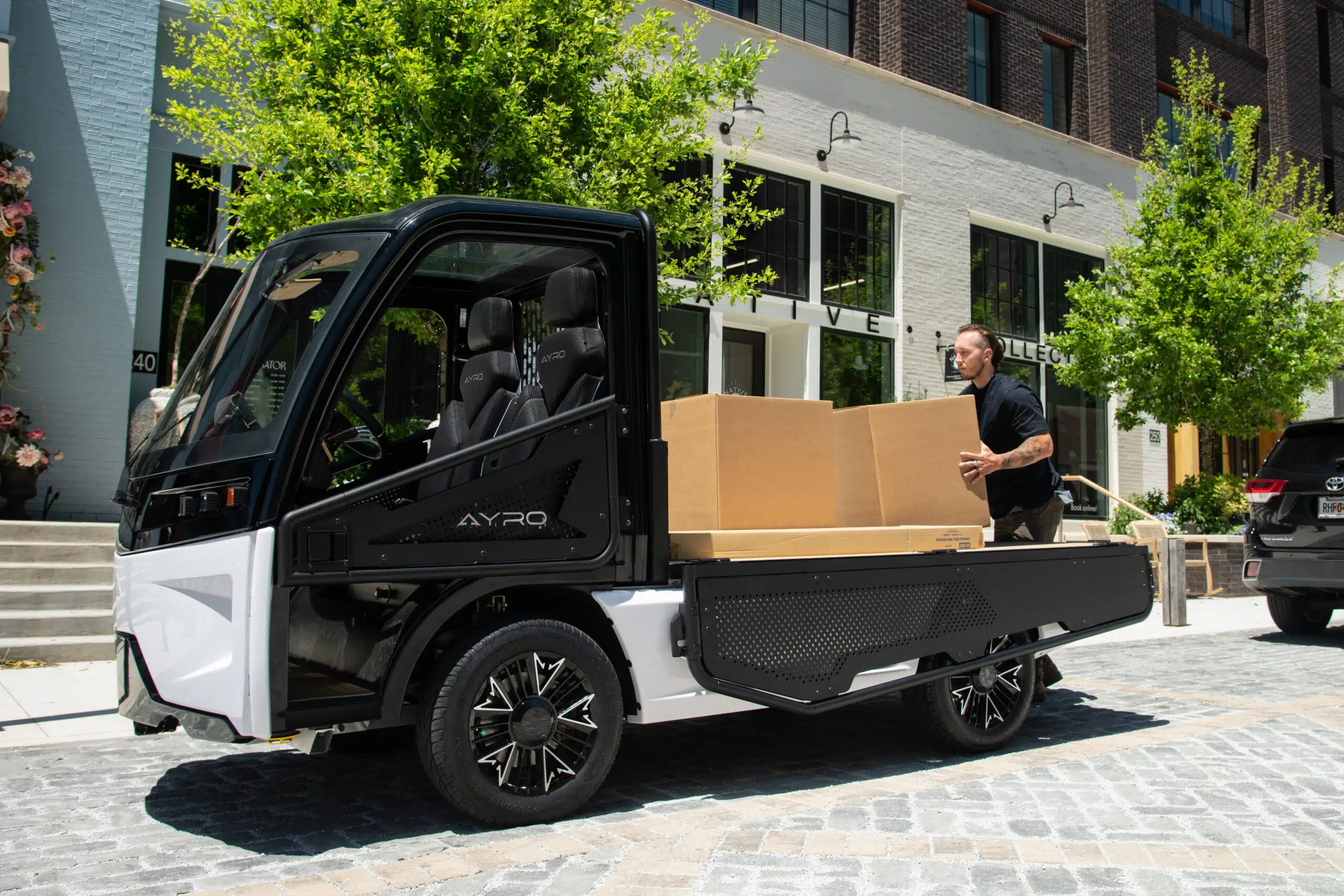Electric Utility Vehicles and Their Many Applications

The most successful business enterprises have always been forward-looking and innovative. They have found ways to not only anticipate the needs of their customers and their industries but also develop better ways to perform their tasks and deliver their products. Utilizing advanced technologies that can fulfill a multitude of needs can help these businesses stay ahead. The efficiency, flexibility, and long-term sustainability of electric utility vehicles make them ideal for a variety of applications that more traditional vehicles simply can’t perform.
What are Electric Utility Vehicles?
While the demand for highway-capable passenger cars demands the most public attention, there is a growing need for electric utility vehicles to do the ‘everyday work’ that is currently done by internal combustion engine (ICE) vehicles. For many utility roles, low-speed electric vehicles (LSEVs) are ideal. The National Highway Traffic Safety Administration defines a Low-Speed Vehicle (LSV), which includes LSEVs, as a four-wheeled motor vehicle with a gross weight of fewer than 3,000 pounds and a top speed of between 20 and 25 miles per hour. Most states allow low-speed vehicles to operate on roads where the posted speed limit is 35 MPH or less. Being on the road with ‘regular’ vehicles means that federally mandated safety requirements are built-in to road-worthy LSEVs. These include seat belts, head and tail lights, brake lights, turn signals, reflectors, mirrors, parking brakes and windshield.
Though there are many similarities between electric utility vehicles and their more traditional ICE cousins, there are also some key distinctions between the vehicle types. What truly separates LSEVs from regular low-speed vehicles with combustion engines is, of course, the electric powertrain. A detailed look at some of the roles that electric utility vehicles can serve illustrates the distinct advantages they have over ICE vehicles.
Applications for Electric Utility Vehicles
Electric utility vehicles can fill the same commercial roles as ICE vehicles, and in most applications can do so more efficiently, cheaply, and safely. As such, businesses are increasingly interested in how this ever-more-popular technology can be leveraged in their particular line of work. For some applications, current performance levels are already perfect for immediate transition and implementation.
Corporate & Medical
Whether carrying medical equipment, maintenance gear, or simply transporting items across a large corporate campus, we know that there are few solutions perfect for the need. Many times, a full-size vehicle is not needed and a smaller utility vehicle isn’t appropriate to traverse a campus while also still meeting sustainability goals for the organization. Plus, the amount of pollution, whether audible, physical, or otherwise created by vehicles is simply unnecessary.
Modern electric utility vehicles can be configured to support specialized needs – including transporting medical-grade equipment. These vehicles are quiet, produce no noxious fumes or odors, and can be driven indoors or out without disturbing customers or patients.
 Hotels & Resorts
Hotels & Resorts
From live events to special celebrations to everyday hospitality and grounds maintenance, a utility vehicle can fill almost every small-scale transportation need. Such vehicles can efficiently traverse diverse settings, including event venues, marinas, golf courses, and beyond. The most advanced electric utility vehicles leave little trace, allowing guests to focus on their enjoyment.
Food & Merchandise
Electric utility vehicles are perfectly adaptable to food and merchandise needs including pickup, delivery, and distribution. With no emissions and no engine noise, such vehicles can be driven right up to dining and preparation areas and have no effect on the dining experience. They can also be modified as serving stations to serve hot and cold food and a wide variety of beverages and are usually small enough to fit inside small venues or any spaces in between.
Education
K-12 and higher education campuses have a unique set of transportation challenges. Electric utility vehicles can support campus staff with upkeep, campus maintenance, delivery of supplies and equipment and getting employees across campus. The compact size of electric utility vehicles allows easy access to narrow pathways and areas not typically accessible by full-size vehicles and causes minimal disruption – allowing students, teachers, professors, administrators, staff and visitors to focus on their efforts without distraction. LSEVs also meet sustainability standards and offer a green solution that supports institutional sustainability initiatives.
 Urban Delivery
Urban Delivery
For urban delivery, it is vital that transportation be available, on time and deliver the exact product for the job. As such, low-speed electric vehicles (LSEVs) in a variety of utility configurations offer the perfect option for short and medium-distance delivery. Most LSEVs offer heavy- and light-duty payload options, meaning they can handle small and large capacities. Cabs are also spacious, climate-controlled and ergonomic to help keep drivers comfortable and focused on the task at hand. And because they emit zero emissions, they can be used indoors without producing any noxious fumes or odors as well as little noise.
Government & Transportation
For governmental agencies or non-profits with security and transportation requirements, LSEVs offer the perfect fleet option. They can move swiftly and quietly between buildings and campuses, traverse streets, runways, or even landscapes without leaving a trace. With customizable, swappable configurations, the most responsive manufacturers can adapt them to carry whatever a fleet requires.
Why Switch to Electric Utility Vehicles?
Electric vehicles continue to be in the headlines almost every day, and they are garnering more and more support due to increasing appreciation for their distinct advantages. With growing social consciousness of viable environmental practices, government regulations and incentives, and greater industry focus on financial efficiency, and overall social consciousness of viable environmental practices, the built-in trends of the electric vehicle revolution are becoming mainstream.
Customization
As with any vehicle, utility LSEV’s configurations can be customized to perform a variety of tasks. From simple transportation setups to permanently mounted machinery to branded last-mile delivery systems, the different ways utility LSEVs can be modified are limited only by the imaginations of their users. Their smaller and simpler power trains also mean that those modifications or accessories are usually easier and cheaper to incorporate into a base model as compared to ICE vehicles. The inherent flexibility of utility vehicles not only allows for diverse modifications but also empowers businesses to creatively build, adapt, and refine these vehicles to precisely match their operational requirements. As technologies advance the load capability and operating time/range of LSEVs will only continue to improve, making them capable of greater customization.
Sustainability
To sustain means to keep something going with strength and support. Finding ways to lessen or even eliminate humanity’s impact on the environment and co-exist with each other over a long period is what sustainability is all about.
According to the UN, over the next 30 years, the world’s population is expected to increase by nearly 2 billion people. With such rapid growth and limited resources, the importance of sustainability is only increasing. Without a healthy environment, safe and supportive communities, and a way to ensure progress and prosperity, humanity will not be able to sustain itself for much longer. One of the greatest threats is carbon emissions, most of which come from ICE vehicle usage. This is why shifting to electric vehicles is the way forward: it significantly decreases dependence on fossil fuels and their processing; it greatly diminishes emissions into the atmosphere; and it creates a quieter, safer, and healthier environment.
Safety
The safety features mandated for LSEVs mean that they have many of the same features as regular full-sized vehicles. Due to their lower operating speeds and the controlled environments in which they are permitted to operate, there is a reduced likelihood of these vehicles being involved in serious accidents with other vehicles. Similarly, the lower speed, often accompanied by improved driver visibility, may contribute to their enhanced safety when in the presence of pedestrians. The inclusion of features such as doors, bumpers, and rear-direction cameras in most LSEVs also enhances safety. Their no-emissions operations mean that they can be used indoors or outdoors in applications where air quality and noise level concerns would make use of combustion engine vehicles dangerous or impossible.
Cost Efficiency
Our sustainable vehicles also help you to maintain lower overhead costs in fuel and maintenance. Well-designed electric vehicles have fewer moving parts, meaning less to wear out and maintain. They are also designed to be long-lasting and adaptable to new roles and new technologies. Electricity is also significantly cheaper than fossil fuels, meaning huge savings in day-to-day operating costs.
Keep up with the Competition
Because of widespread applications, safety, sustainability, and cost efficiency, many companies are planning to expand their use of utility LSEVs. Within the next five years, the LSEV market is expected to reach $13.1 billion, with an annual growth rate of 5.1%. With so much growth and competition, increasingly business- and environmentally-savvy consumers will be looking for innovative and sustainable designs that cannot just deliver the most bang for the buck, but can do so with the least amount of environmental impact.
While many company fleets encompass a diverse range of transportation options, there is an emerging focus on last-mile delivery vans and trucks. A substantial portion of these last-mile vehicles are being transitioned to low speed vehicles (LSVs), reflecting a growing trend towards more sustainable and efficient urban logistics.
AYRO’s Future
Every application discussed above, and every advantage of utility LSEVs can be found in the products AYRO provides. As growth and competition increase, consumers are increasingly seeking sustainable designs that deliver value and minimize environmental impact. AYRO designs and produces zero-emissions vehicles and systems that redefine the very nature of sustainability. Our goal is to craft solutions in a way that leaves minimal impact on not only carbon emissions but the space itself. From tire tread, fuel cells, sound, and even discordant visuals, we apply engineering and artistry to every element of our product mix.

 Hotels & Resorts
Hotels & Resorts Urban Delivery
Urban Delivery